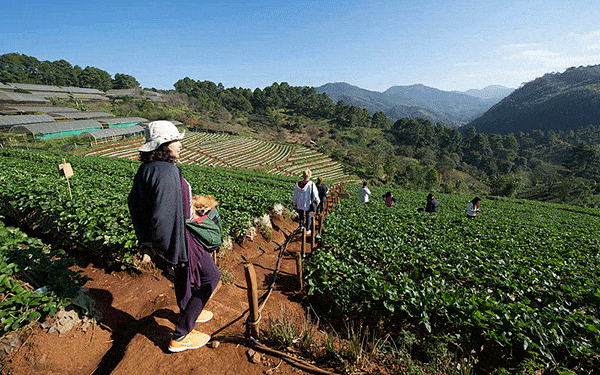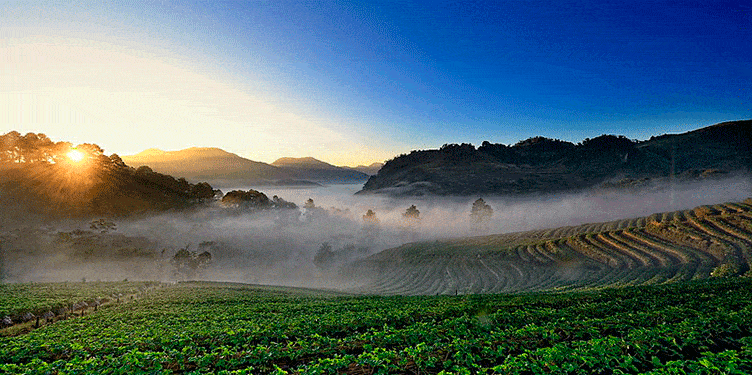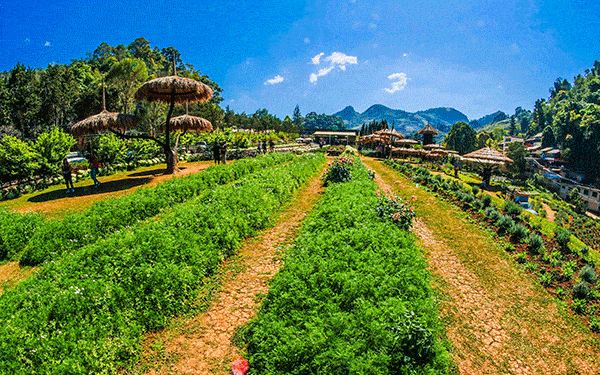Heard about the Thailand Royal Projects but aren’t sure exactly what they are? Take a look at our guide to get the complete run-down.
Since their creation in the late 1960s, Thailand’s Royal Projects have supported hundreds of thousands of people across the country.
But what are the Royal Projects all about? We’ve got all the information you need on these fantastic charitable initiatives, including how they affect your time in Thailand.
Let’s get straight into it…
Post Contents
What is the Thailand Royal Project Foundation?
There are currently more than 4,000 Royal Projects throughout Thailand covering a multitude of programs — mostly in rural areas.
The main objectives of these projects are to benefit Thailand’s economy as a whole through agriculture, help hill tribes communities have a better quality of life, protect natural resources, and eradicate opium production.
Projects are designed to boost local economies and provide education and healthcare, assist in research, promote water management, agriculture, and self-sufficiency, and preserve Thailand’s forests, and are aimed at helping poorer communities when they need it most, as well as conserving Thailand’s unique culture for future generations.
View this post on Instagram
Since their inception in 1969, the Royal Projects have served to successfully eliminate opium cultivation, reduce poverty among the hill tribe peoples, vastly improve health services and health education countrywide, and introduce schooling for hill tribe children and provide adults with education regarding health, the environment, business skills and career development.
In addition, great environmental benefits have been made as a result of the Thailand Royal Projects, including dramatically reducing deforestation and the reforestation of mangrove forests.
Many of these Projects are open to the public, and participating in them offers up an incredible opportunity for tourists to experience Thailand and connect with the Thai people, as well as helping a good cause.
Activities may include things such as helping to run a farm or go fishing, planting rice or learning to cook authentic Thai dishes, spend the day learning about Thai fruits, vegetables, and spices on an organic farm,or teaching young children in rural villages.
Origins of the Royal Projects
At the end of the 1960’s, Thailand’s late King Bhumibol Adulyadej discovered that farmers could have a better income from growing a certain variety of peach than they could by growing poppies for opium.
This discovery lead to the King funding research into developing the peach tree at Kasetsart University, with the view to replacing opium production with alternative agriculture.
The project attracted attention from the United Nations, giving rise to a collaborative Thai/international program for drug abuse control in the 70s, and during the 1980s overseas financial support was received in order to continue to develop and research alternative forms of agriculture for rural farmers to improve their standard of living.

By LannaPhoto (CC BY-SA 4.0 licence)
Over the years, these non-profit projects grew and expanded through close cooperation with the local people and experts to ensure the best outcomes, and in 1992 the Royal Project Foundation was officially formed as a public organisation.
Where are the Royal Projects?
Although there are Royal Projects based all over Thailand, the vast majority are situated in the north of the country — particularly in areas where hill tribes are present — and there are 39 development centres dispersed among the five provinces in Northern Thailand.
Chiang Mai boasts some of the main and most accessible Royal Projects, including the Royal Agricultural Station at Angkhan — the original Royal Project, and a research centre for cold climate crops — and the Royal Agricultural Station at Inthanon, a research centre for exotic plants and flowers, vegetables and fruits.
The Nong Hoi Royal Project Development Centre is a popular eco tourism project, where visitors can learn about the different types of farming processes and visit local hill tribes to discover more about their way of life.

By LannaPhoto (CC BY-SA 4.0 licence)
Not far from Bangkok in Phetchaburi, a Royal Project is in place aimed at improving the environment by ameliorating water conservation and focusing on mangrove restoration.
On the east coast, The Kung Krabaen Bay Royal Development Study Centre plays a vital role in the improvement of fishery and propagation of marine life as well as restoring previously degraded coastal areas. There are many projects like these and more open to the public.
Royal Projects Produce in Bangkok’s Dining Scene
Dining out in Bangkok? Thailand is well known as a land of culinary delights, and in addition to preserving traditional agriculture and helping local communities become self-sufficient, many Royal Projects are also the source of outstanding fresh produce.
As a result many of Bangkok’s best restaurants and top chefs insist on using Royal Project produce due to its excellent quality, and thanks to the research and development put in place by the projects, they have access to varieties of locally grown produce which would previously have had to have been imported from overseas.
Over 500 different types of fruit and vegetables from northern Thailand’s temperate, hilly regions — as well as fresh meat and fish — are taking on starring roles on the menus of Michelin starred Bangkok restaurants.
In turn, not only do chefs create world class dishes, they also give back to Thai rural communities, helping them earn a living and encouraging sustainable development.
Have you visited any of the Thailand Royal Projects?


